Homemade Green Salsa
Homemade Salsa Verde is way better than the store-bought versions. Easy to make with just 6 ingredients, you can have the delicious green salsa you enjoy at your favorite Mexican restaurants but without leaving the house!
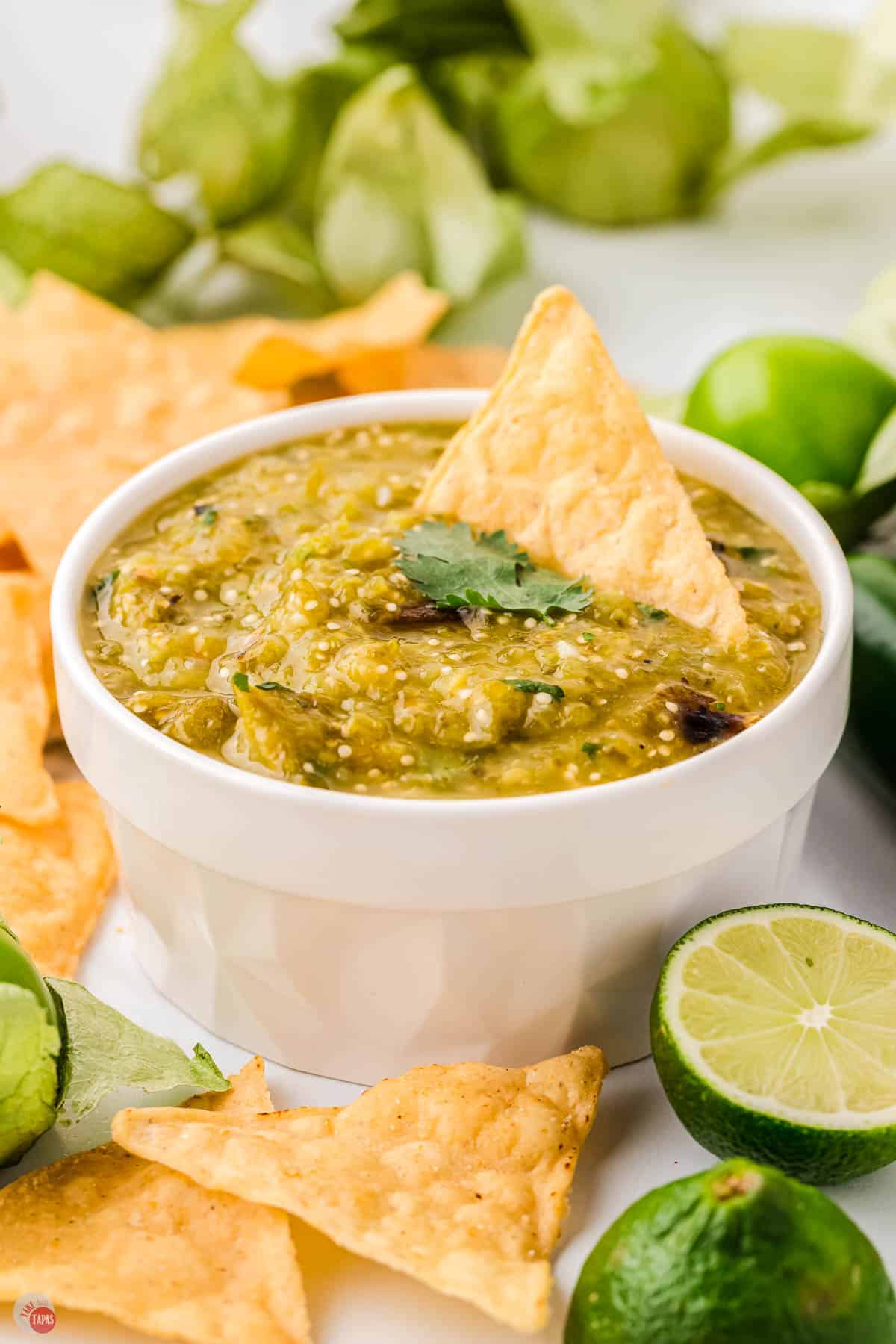
If I’m being honest, I was never really a fan of salsa verde growing up. I thought it tart and frankly a little weird.
But as I have gotten older, my tastes have changed. It was really my mother in law that got me to try it again and now I absolutely love it.
So I decided to make a recipe just for her! Although traditional tomatillo salsa recipe is made with raw tomatillos, I decided to roast them this time which brings out a slight smoky flavor.
And what a difference it made! Speaking of differences, let’s answer the question everyone asks…
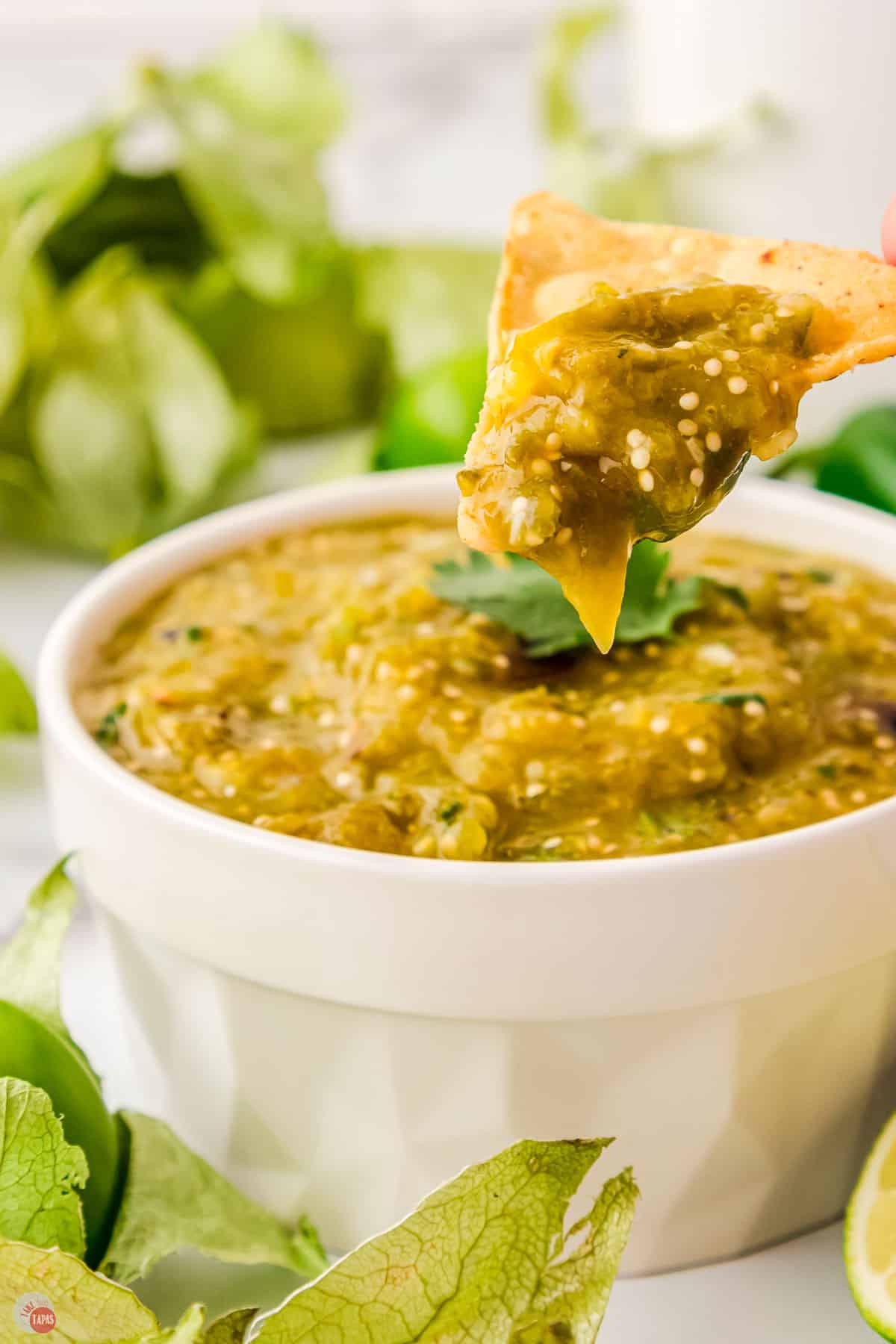
Salsa vs Salsa Verde
Regular, or red salsa (salsa roja), has a base of red tomatoes, but salsa verde uses green tomatillos as its main ingredient.
If you are unfamiliar with tomatillos they are are little green fruit that look like small green tomatoes. But unlike a tomato, tomatillos stay green as they ripen.
You actually could make a green tomato salsa verde, but it is much easier to find tomatillos in the market than it is to find fresh green tomatoes.
Besides that though, salsa verde and salsa roja (red) use essentially the same ingredients.
This post may contain affiliate links. As an Amazon Associate, I earn from qualifying purchases at no additional cost to you. Read my disclosure policy.
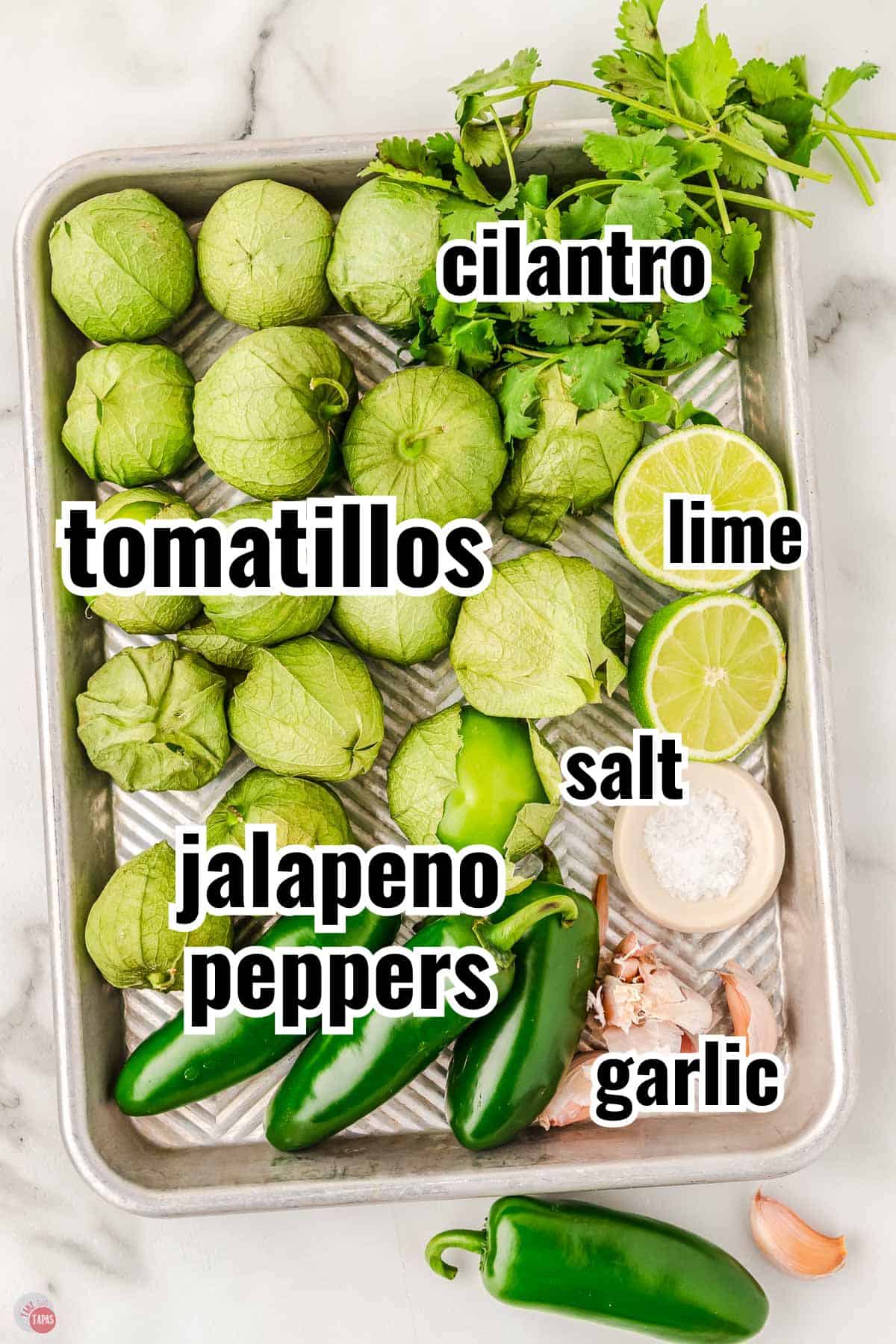
Ingredient Notes
Tomatillos – Small, round green tomatillos are the best.
Onion – I prefer a white onion in this or substitute a yellow onion.
Jalapeno – Fresh jalapeño peppers. Sub serrano peppers for more heat.
Garlic – Fresh minced garlic or substitute garlic powder if needed.
Cilantro – Fresh cilantro or coriander.
Lime – Fresh lime juice is best!
For more insider tips, tricks, and a behind the scenes look, follow me on Pinterest, Facebook, Instagram, & X.
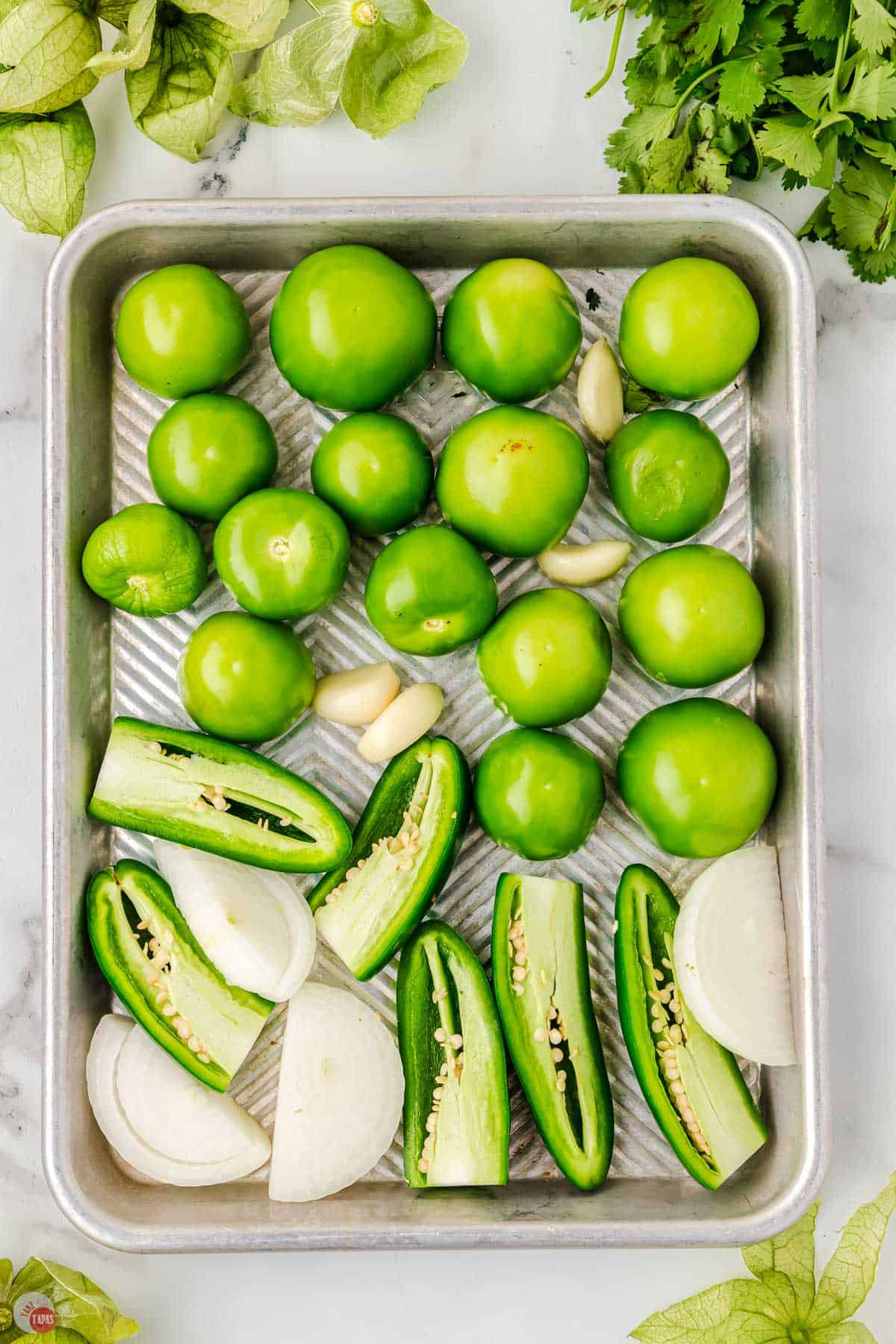
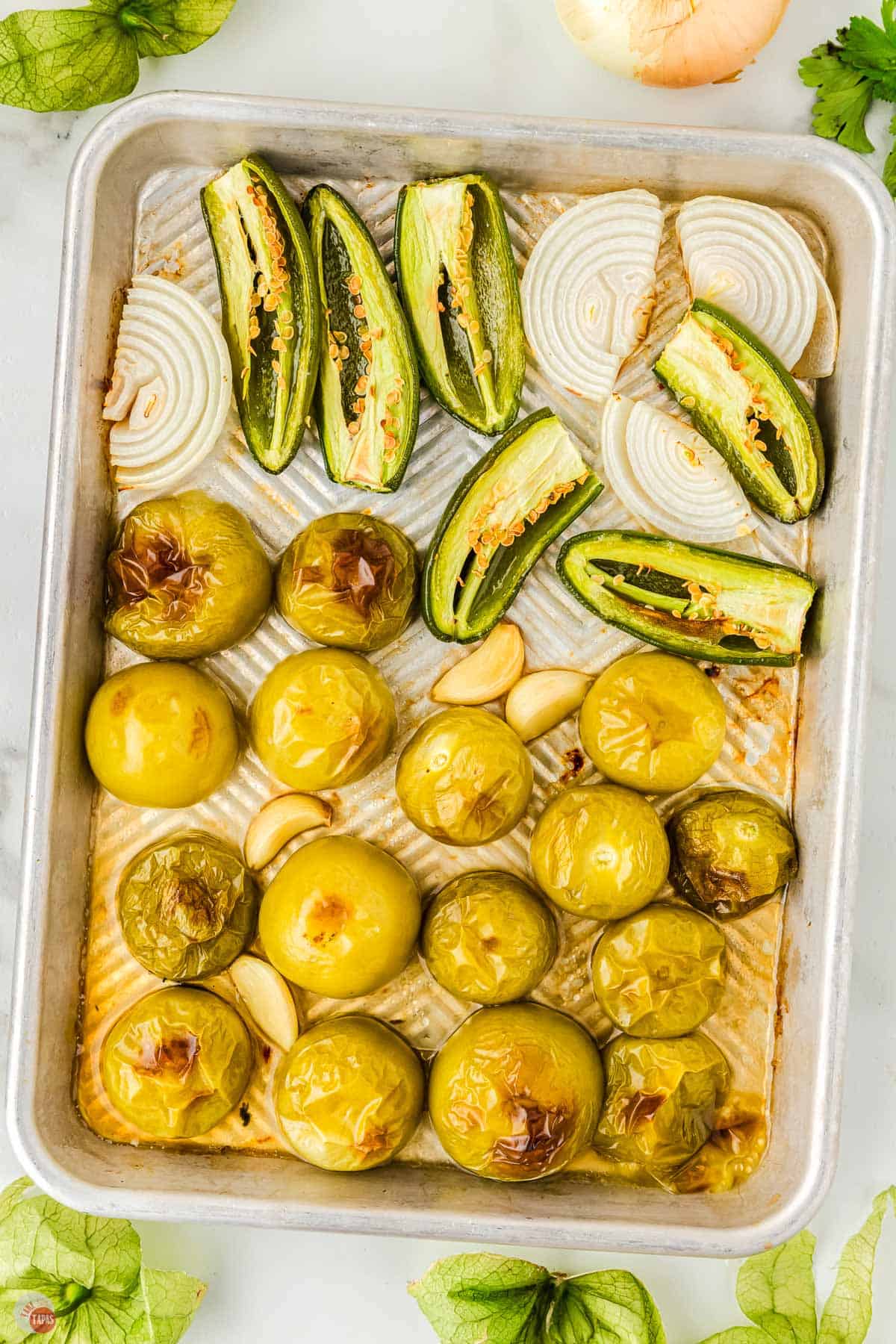
How to make Salsa Verde
First: Preheat oven to broil. Place the tomatillos, onions, garlic, and jalapeño on a baking sheet and place in the oven. Once they start to brown and get tender, pull them out.
Second: Place the onions, jalapeno, and garlic in a food processor or blender. Add the cilantro. Pulse until they are in small pieces.
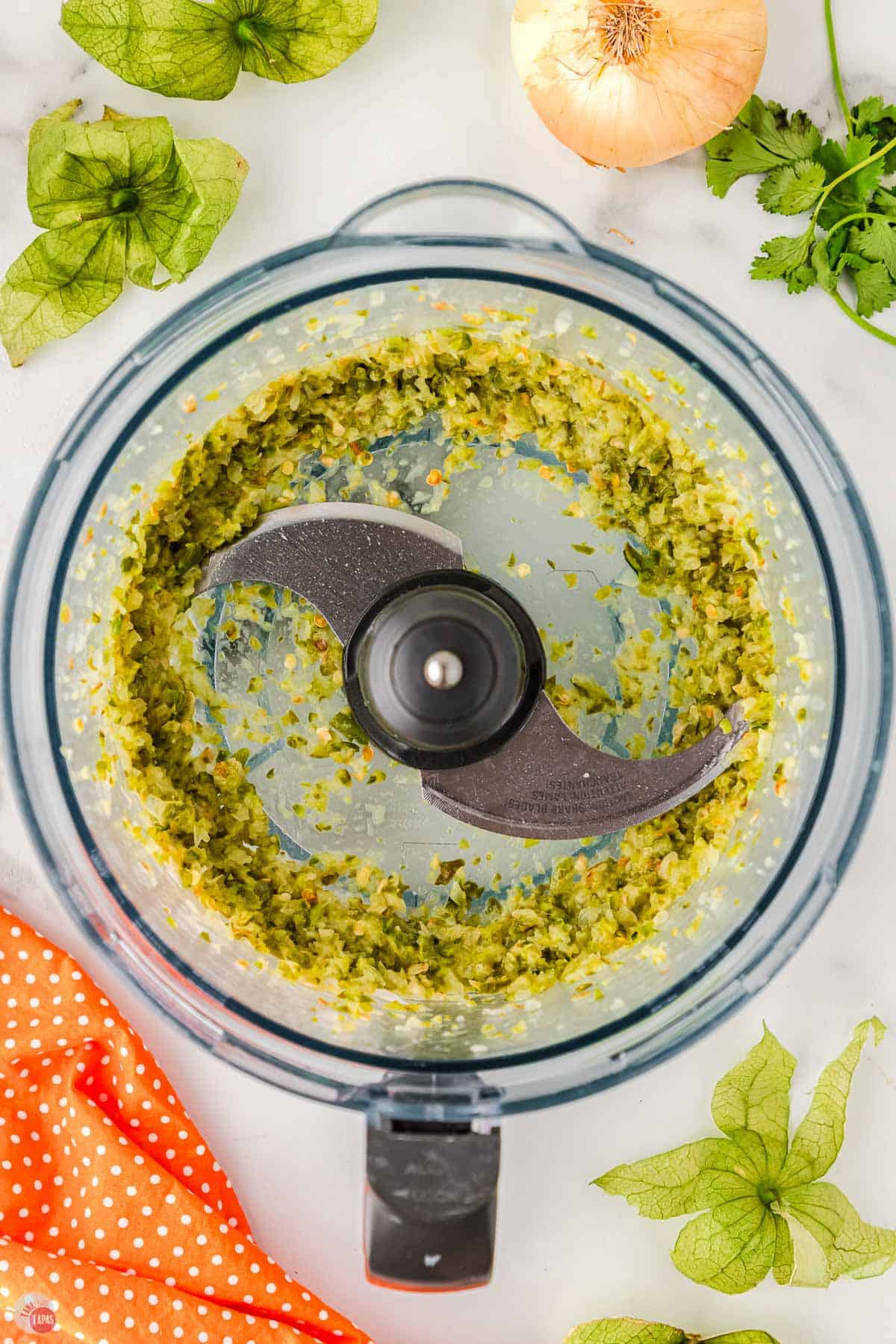
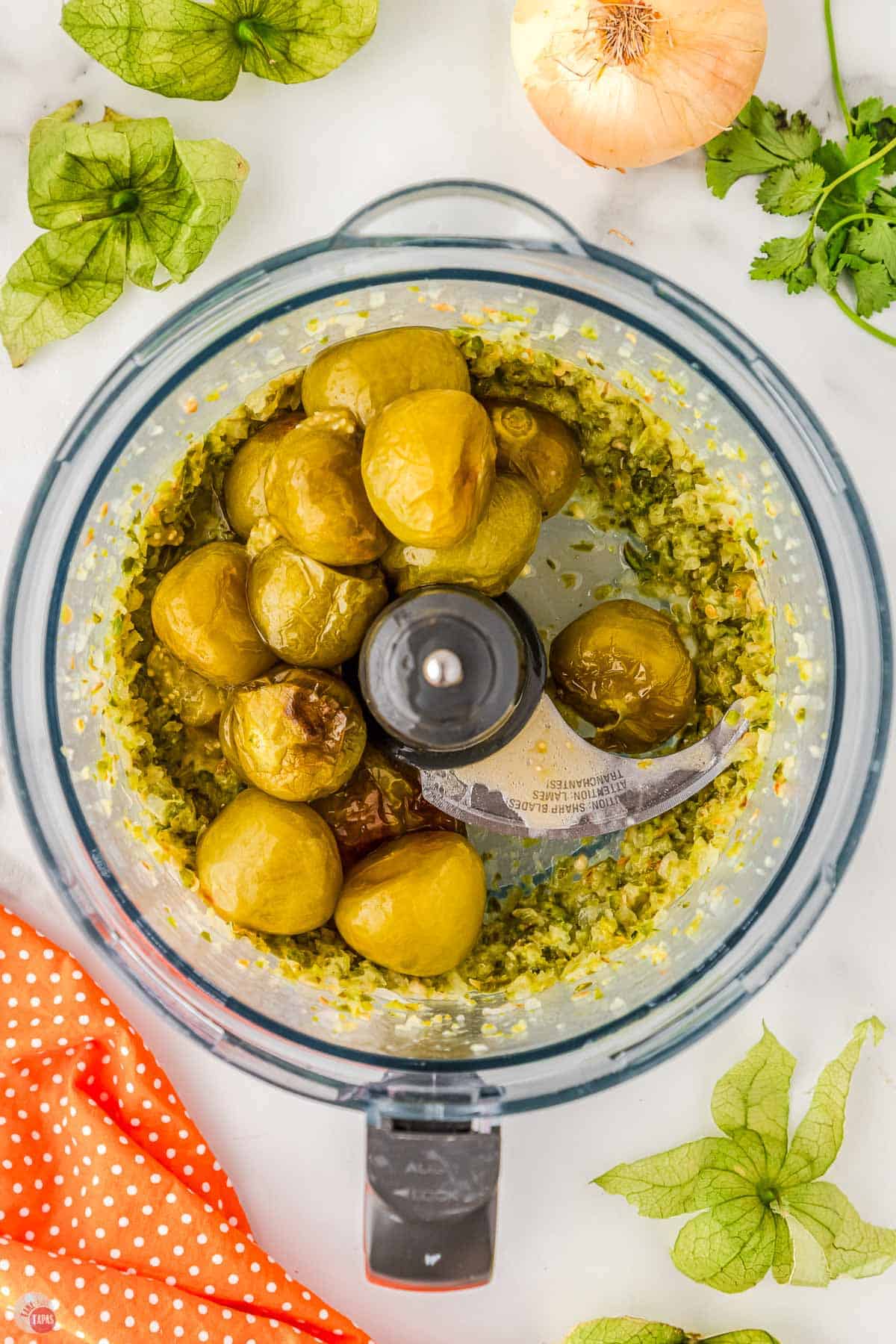
Third: Add the tomatillos and pulse until you get the consistency you want.
Fourth: Add the salt and lime. Pulse or once or twice more and taste!
For the full recipe and detailed instructions, please refer to the recipe card at the bottom of the post.
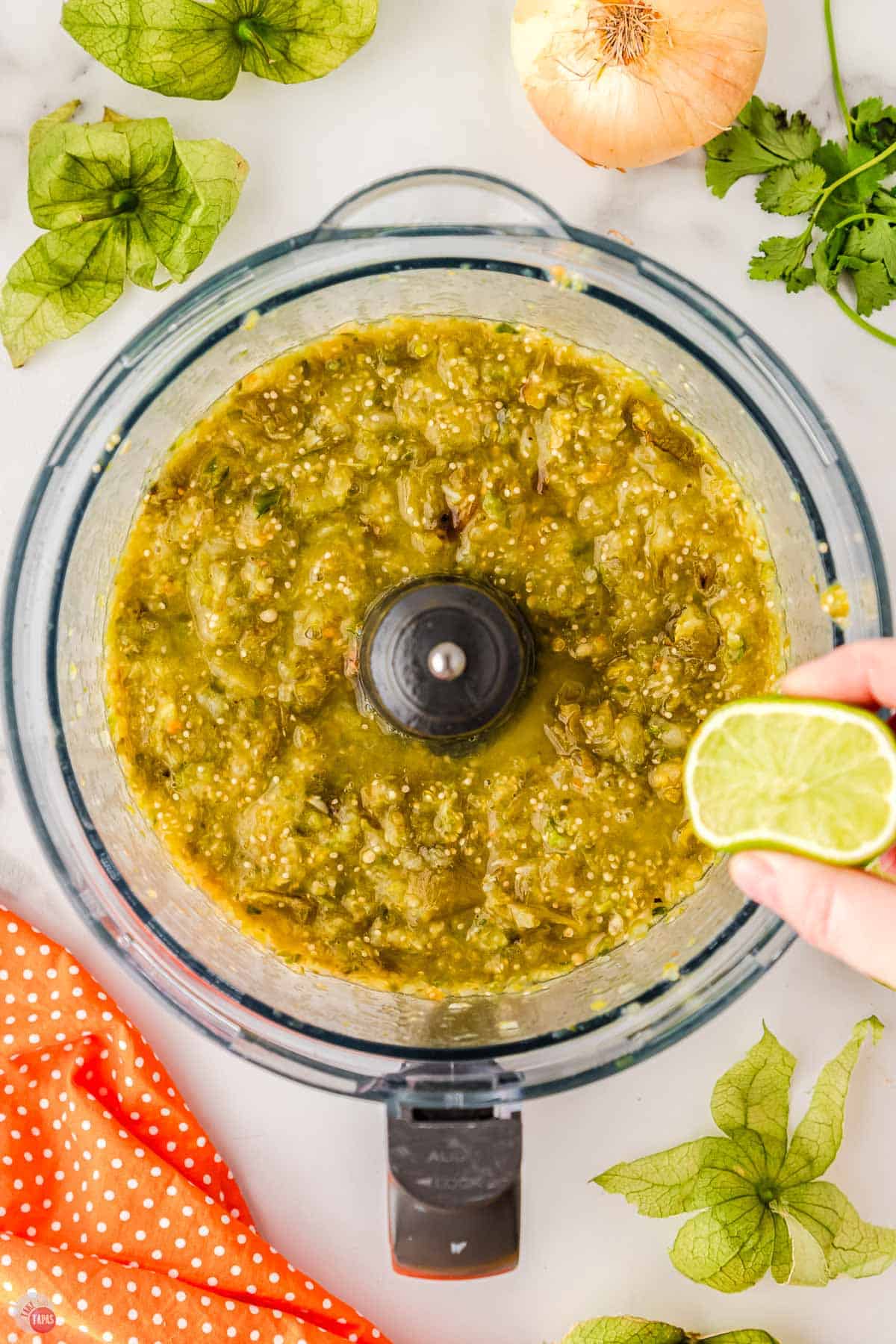
How long does it last?
Salsa verde keeps well in the fridge for up to 5 days. Store in an airtight container sealed container for best results.
Can I freeze it?
Yes you can! Place in a freezer safe bag or container and store for up to 6 months.
While you can freeze it after it’s made, it will lose some of the consistency and become watery next time you thaw it.
If you are okay with that then freeze away. If I do this I end up using it to add to soups, enchiladas, or make a creamy version with it.
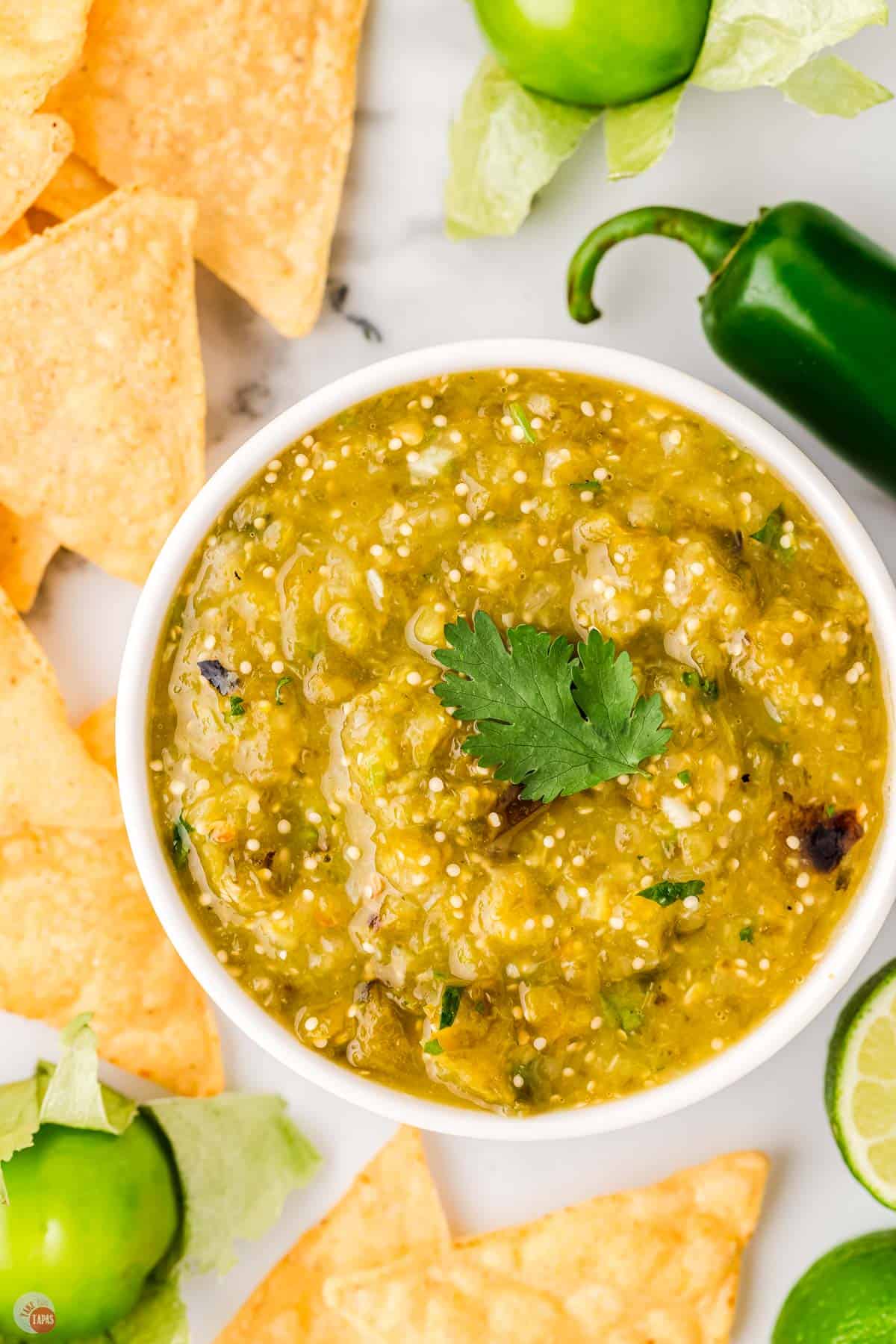
Uses for Salsa Verde
This recipe is delicious on so many things which is why it’s now one of my favorite salsas.
I love it as is with homemade tortilla chips, but you can also add it as walking taco toppings, on nachos, enchiladas, burritos, and burrito bowls, or in the center of this blooming quesadilla ring!
Pour it on chicken, steak, and pork chops too.
Other Mexican Food Favorites
I could eat at a Mexican restaurant every night of the week and never get tired of it. Chimichangas are my favorite but I do like to change what I eat them with.
Sometimes I just pour queso recipe with evaporated milk on them. Other times I like to try them with my easy pico de gallo recipe.
If you just love salsas in general, check out my pineapple mango salsa, my fruit salsa, and this pickle de gallo for a fun twist on the classic.
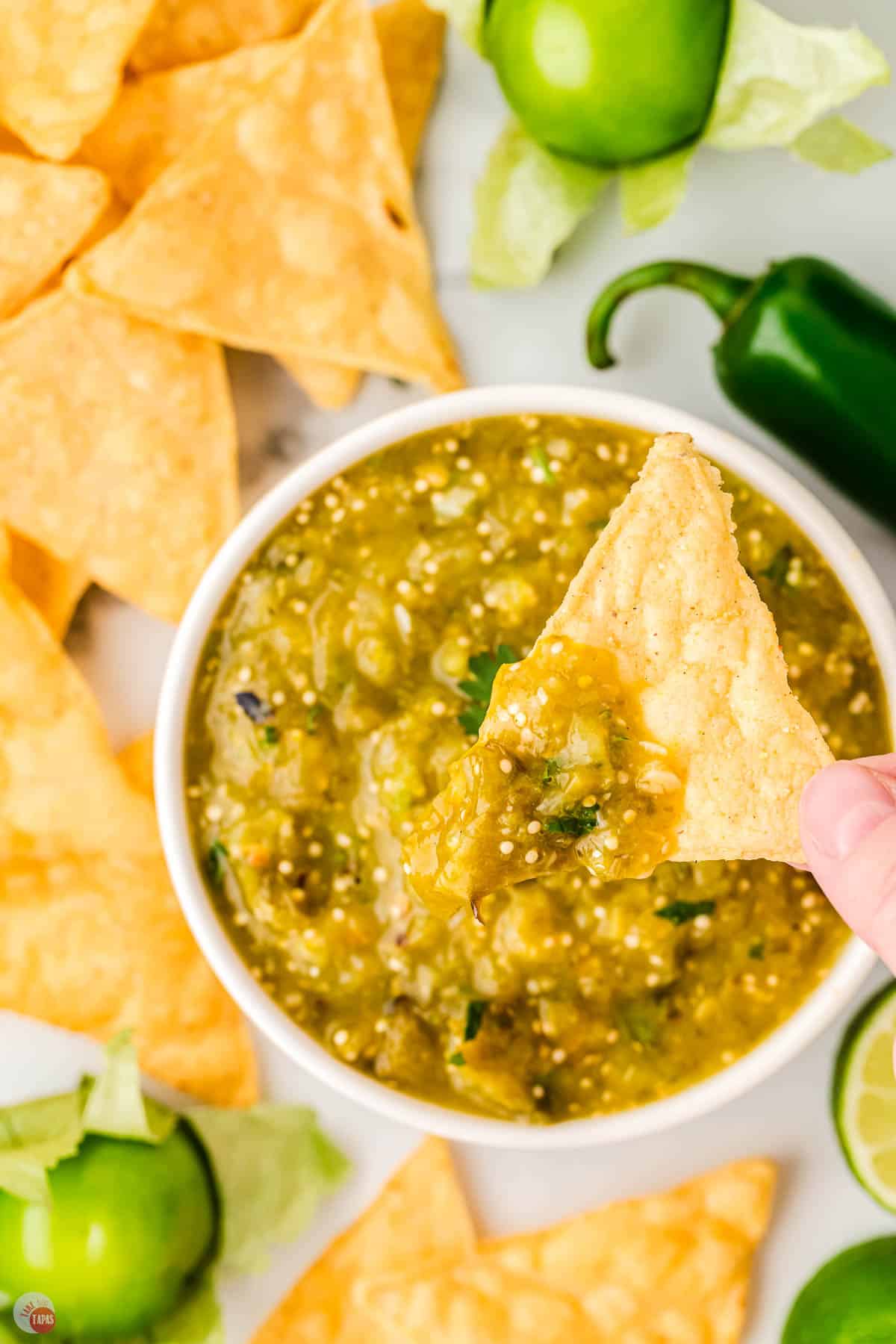
How to Pick the Best Tomatillos
- Choose tomatillos that are firm and bright green in color. Avoid any that are overly soft, shriveled, or have brown/black spots.
- Look for ones that are medium to large in size. Smaller ones tend to be seedier and less meaty.
- Make sure the papery husk is intact, fresh looking, and not dried out.
- Choose ones that feel heavy for their size. This usually means the flesh inside is dense and they contain less seeds.
- Peak season is in the summer months so be sure to grab them then.
- The outside of the husk can have a slightly sticky residue and that’s normal. But make sure the tomatillo itself is dry.
- If the flavor of the tomatillos is tangy like a lemon, then it’s less ripe. If it’s like a juicy tomato and slightly sweet then it’s very ripe.
Can you eat raw tomatillos?
A tomatillo can be eaten raw. It is a bit sharper tasting than a tomato if it is unripe. Fully ripe, it is about as acidic as a tomato.
The reason for roasting, frying, or boiling them first is to cut some of that acidity out. However, if you like a pretty sharp salsa, then using them raw is just fine too.
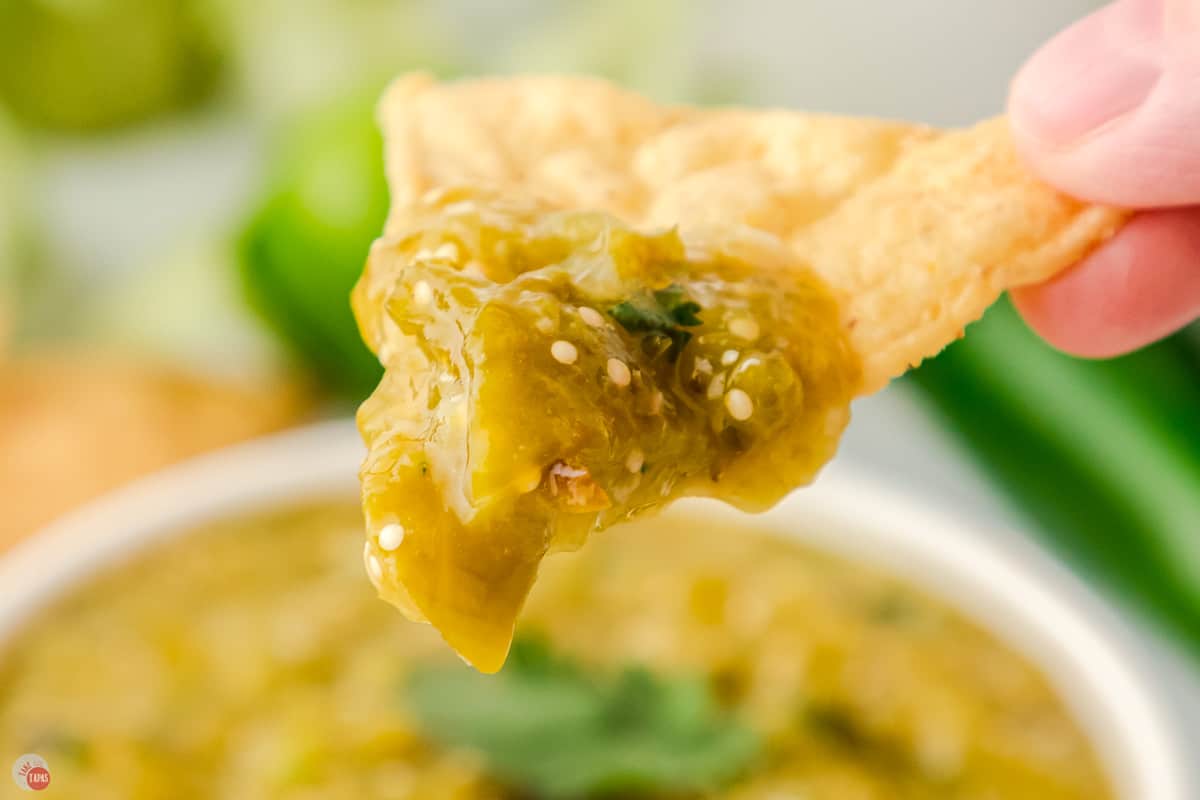
What’s the difference between green sauce and salsa verde?
Green sauce is often used to describe green enchilada sauce. It too is made with tomatillos but they are usually boiled and includes water or broth to get that sauce-like consistency.
Salsa Verde is made with raw fresh ingredients and is typically eaten as a dip or condiment on top of other dishes like nachos or tacos.
You can also make a creamy salsa verde version by adding in some sour cream or avocado and blending until smooth.
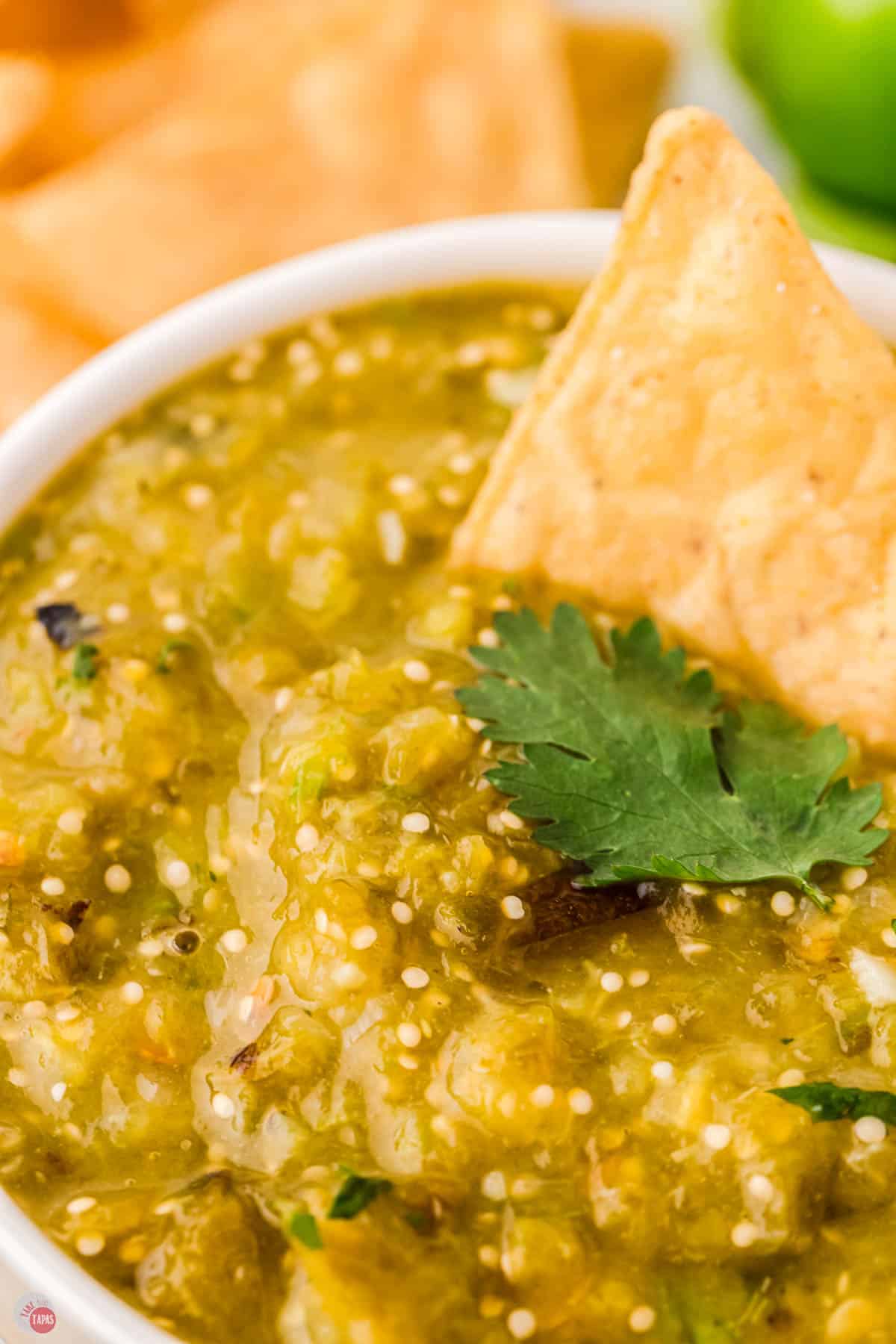
Tapas Tips & Tricks
- Choose firm tomatillos in season for best flavor.
- Roast them dry or with a little olive oil if needed.
- Bring to room temperature before adding to food processor to avoid getting burned.
- Add them to the food processor after you pulse the onions. They are very soft and will be over worked if you add them in with all the larger ingredients.
- For a spicier salsa, add in some serrano or habanero peppers. You can even throw in a pinch of this homemade enchilada seasoning mix recipe. It adds a nice kick and some more flavor.
If you love this recipe as much as I do, please leave us a five-star review in the comment section below. Thanks!
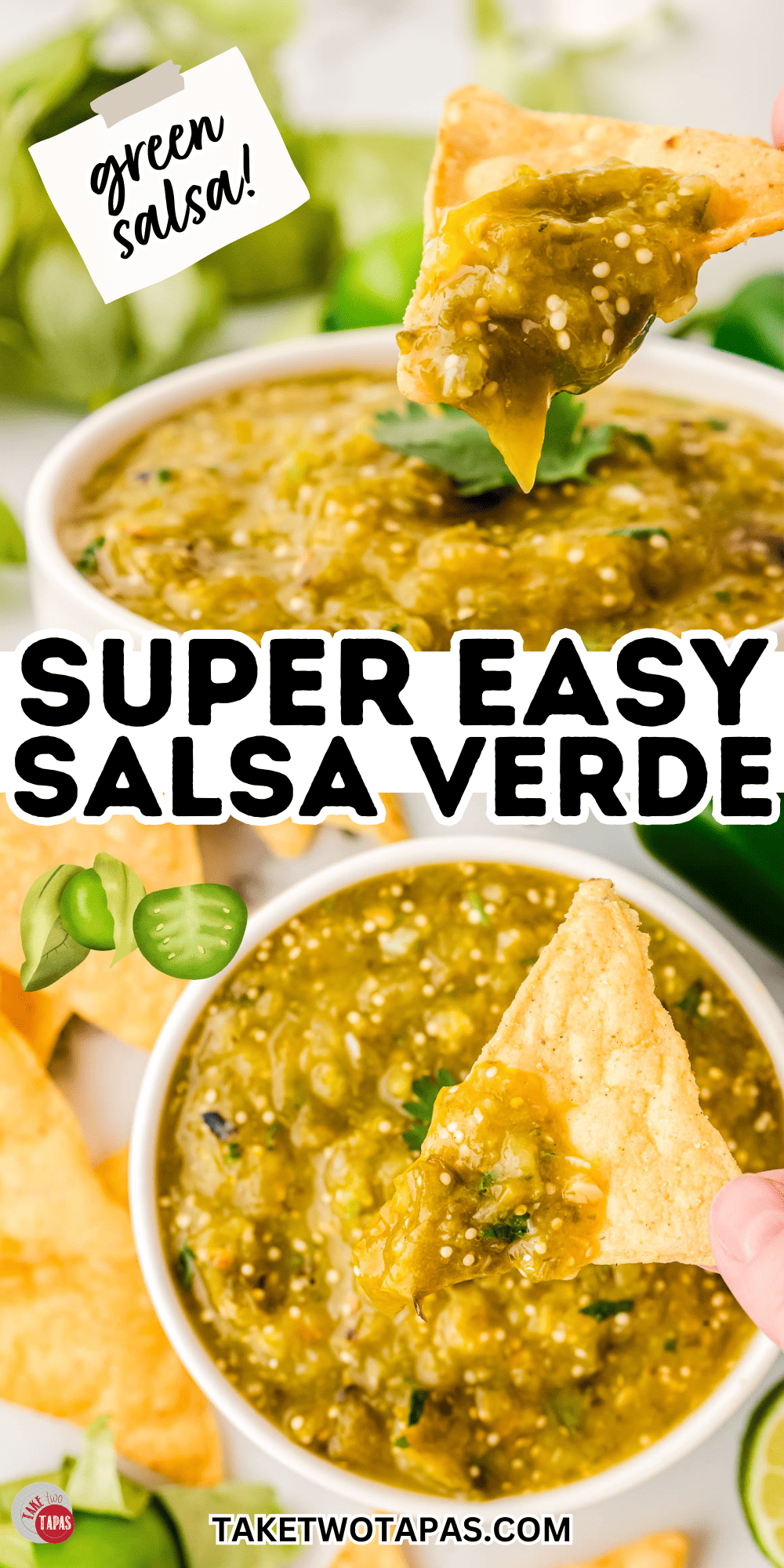
This roasted tomatillo salsa is perfect for so many dishes or just snacking on the weekends. A batch of this salsa is perfect for Cinco de Mayo!
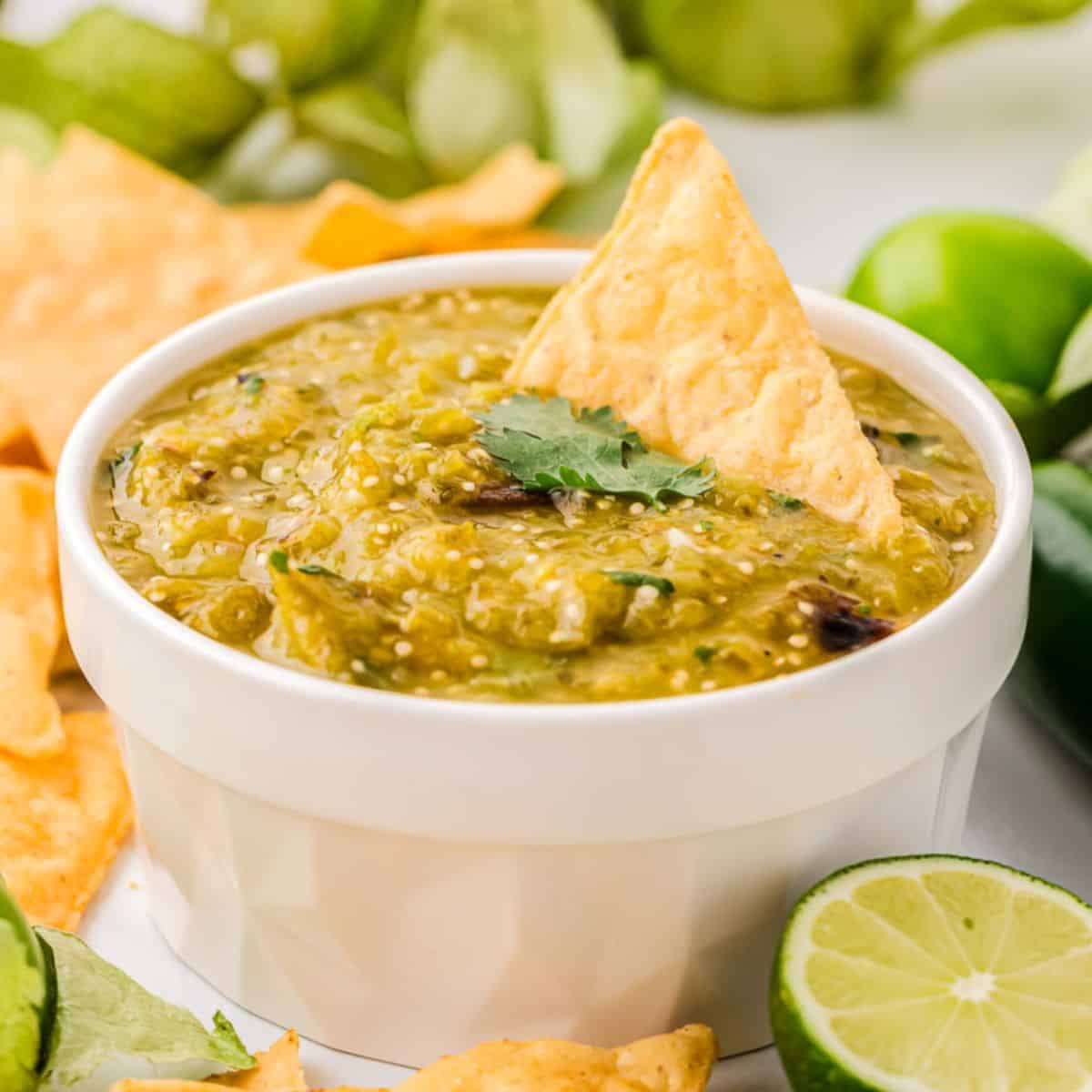
Salsa Verde Recipe
Ingredients
- 1.5 pounds tomatillos about 10 -12 medium, husks removed, and rinsed
- 1/2 cup cilantro
- 1 small white onion
- 3 jalapenos
- juice of 1 lime
- salt to taste
- 4 cloves garlic
Instructions
- Broil or roast the tomatillos, onions, garlic, and jalapeño on a baking sheet in the oven. Once they start to brown and get tender, pull them out.
- Add them to the a food processor or blender, along with the cilantro, but leave out the tomatillos.
- Chop the onions, jalapeño, garlic and cilantro until they are in small pieces.
- Once they are processed a bit, add the tomatillos and pulse a few times. They are very soft and will be over worked if you add them in with all the larger ingredients.
- Now is the time to add the salt and lime.
- Pulse or chop once or twice more and then check the seasoning level.
- Now it's ready to eat!
Notes
- Choose firm tomatillos in season for best flavor.
- Roast them dry or with a little olive oil if needed.
- Bring to room temperature before adding to food processor to avoid getting burned.
- Add them to the food processor after you pulse the onions. They are very soft and will be over worked if you add them in with all the larger ingredients.
- For a spicier salsa, add in some serrano or habanero peppers.
Nutrition
{Originally published 2/27/20 – photos and recipe notes updated 02/23/24}
©TakeTwoTapas.com. Content and photographs are copyright protected. Sharing of this recipe is both encouraged and appreciated. Copying and/or pasting full recipes to any social media is strictly prohibited.

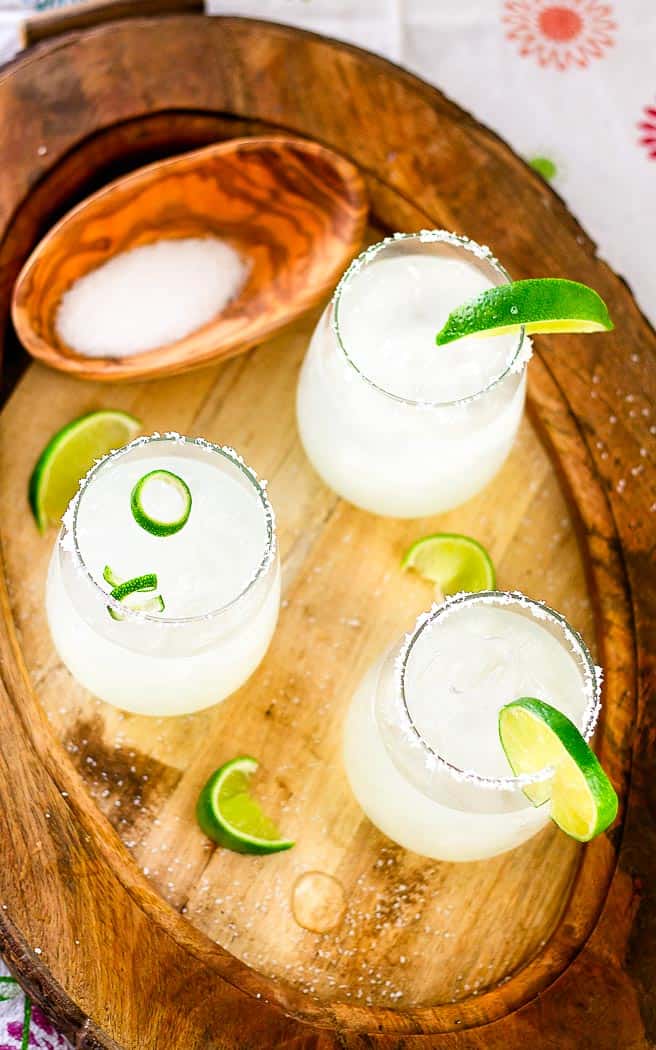
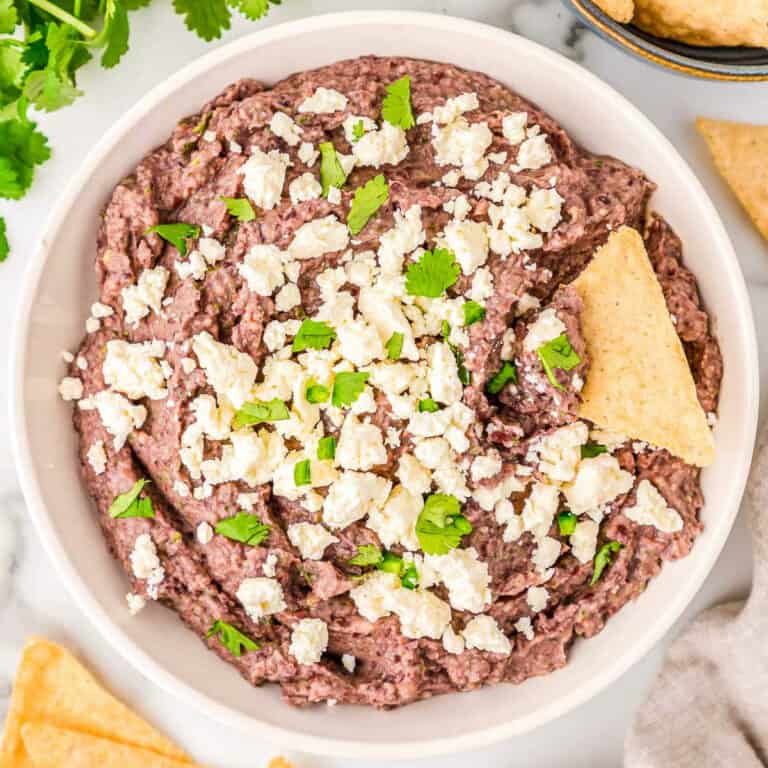



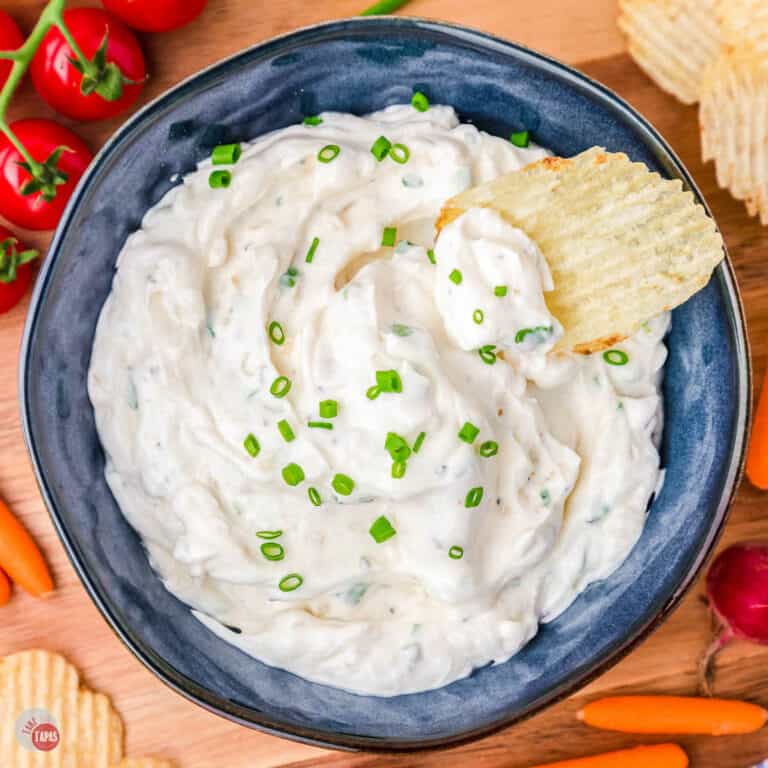
loved this recipe, so much flavor!
I have been hunting for a good recipe to make my own salsa verde instead of buying it. This is absolutely delicious!
Fresh salsa verde has SO MUCH FLAVOR!!
Love easy and tasty this recipe is!